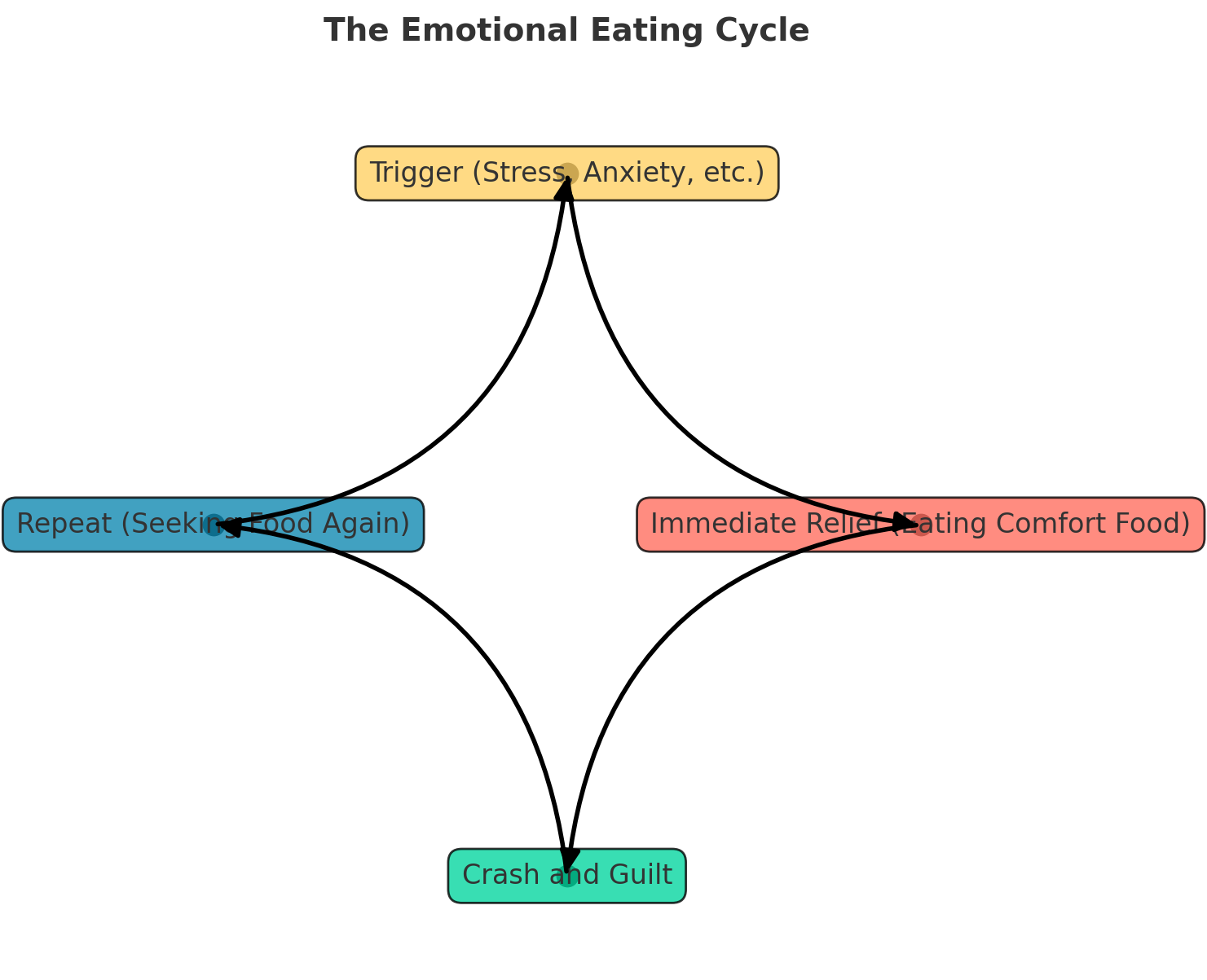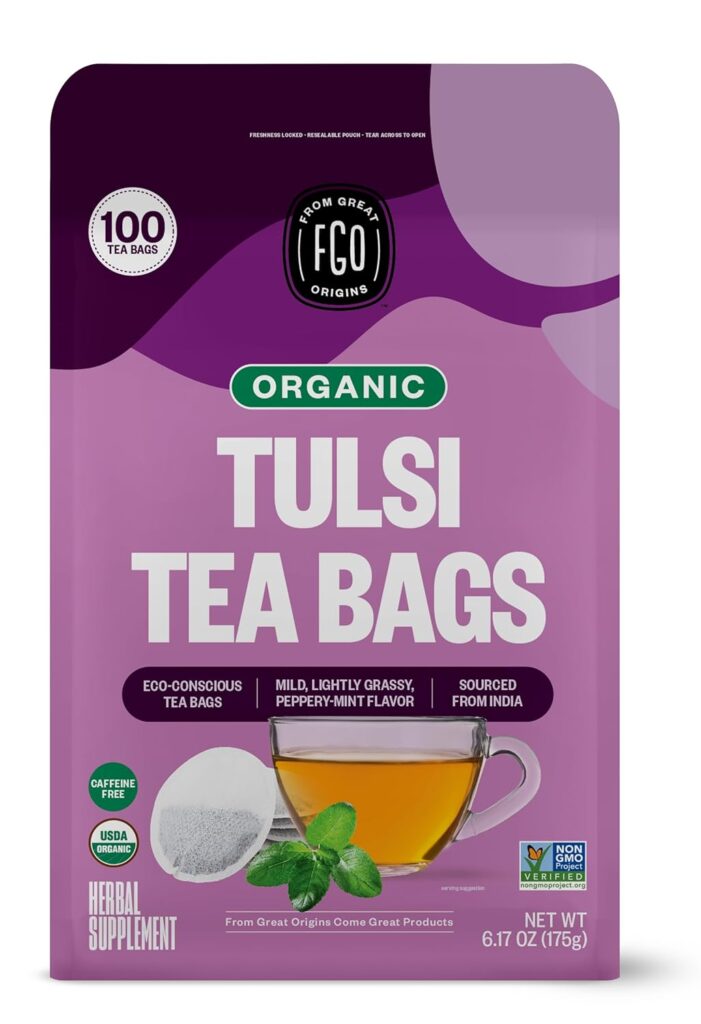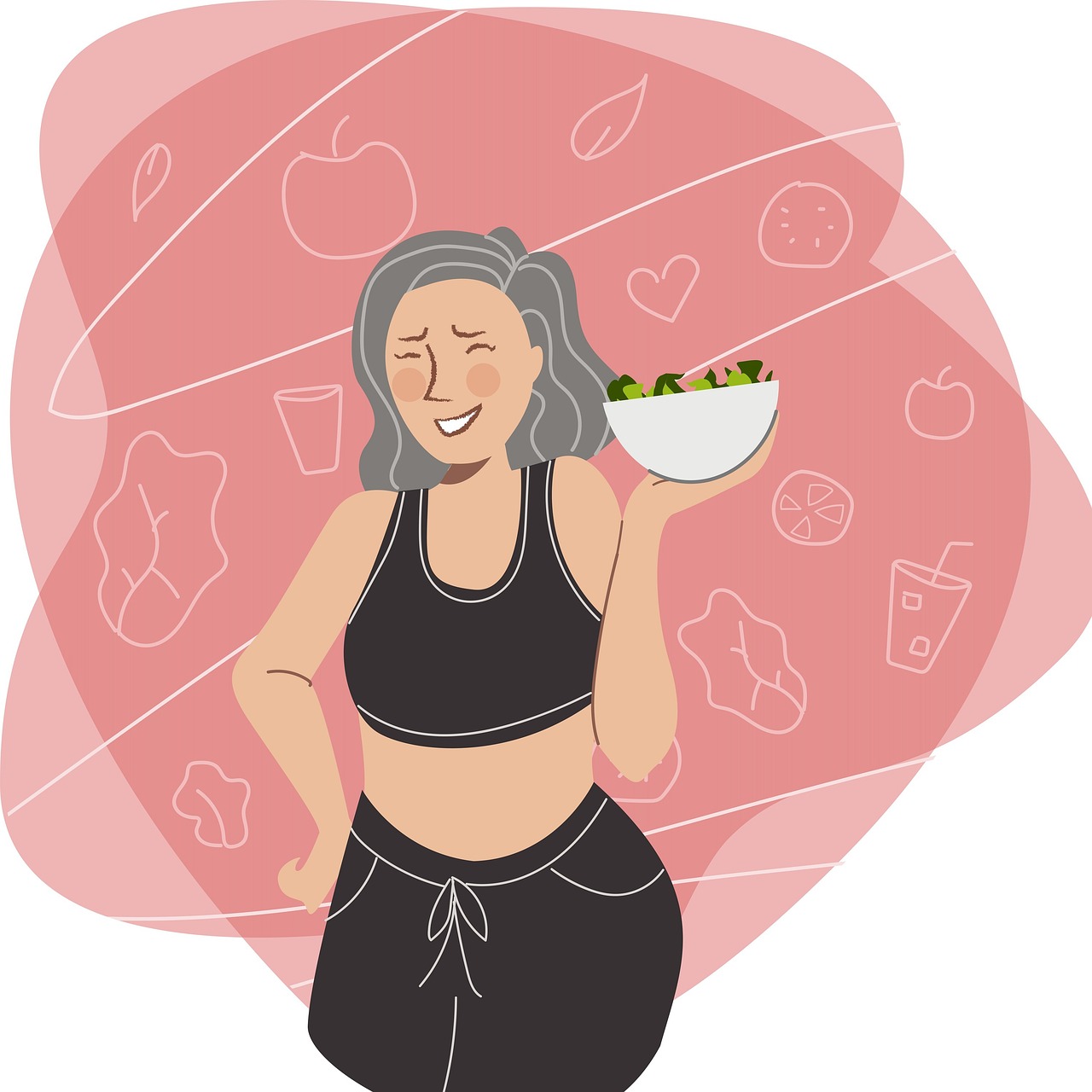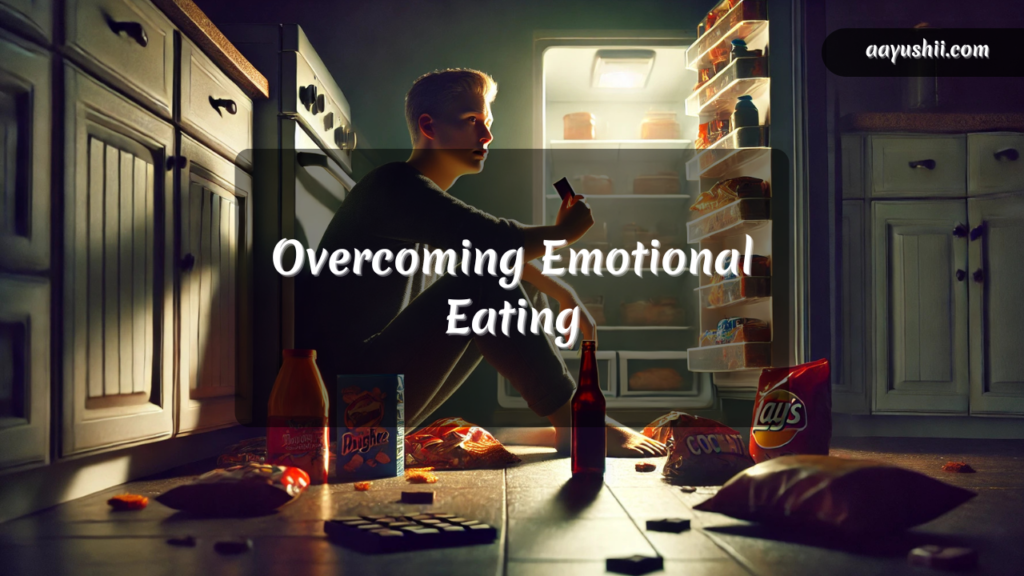Emotional eating is an incredibly common experience that spans cultures, ages, and socioeconomic backgrounds. In a world filled with the pressures of work, family, and personal responsibilities, it’s not unusual to turn to food for comfort. From seeking solace in sugary desserts during times of stress to indulging in high-calorie meals when feeling emotionally overwhelmed, emotional eating can become a cycle that’s difficult to break.
In many cases, emotional eating is a quick fix for deeper-rooted issues such as chronic stress, unresolved emotional trauma, or anxiety. Instead of dealing with the underlying feelings, people might mask them with food — especially foods high in sugar, salt, and fat that can momentarily soothe the mind and body. The relief these comfort foods provide, however, is temporary. As the guilt, health concerns, and unaddressed emotional struggles resurface, the cycle begins again, potentially leading to weight gain, poor nutritional habits, and an even greater sense of stress or disappointment.
The goal of this article is to explore how to manage and overcome emotional eating by combining the power of herbal stress-busting remedies with mindful, practical techniques. You’ll learn about the herbal allies that help regulate stress response and anxiety, as well as the mindful practices that foster true emotional resilience, self-awareness, and improved relationships with both your feelings and the food on your plate.
By understanding the root causes of emotional eating and discovering the role stress plays in its persistence, you will be better equipped to break the cycle. Herbal stress-busters — such as adaptogenic herbs and calming botanicals — can be integrated into your daily life to support balanced mood and emotional well-being. Coupled with mindful eating and mental health techniques, these holistic interventions can pave the way for a healthier, more fulfilling relationship with food and your body.
Throughout the next sections, we’ll dive into the science behind emotional eating, explore exactly how stress impacts your eating behaviors, and examine effective natural remedies. We’ll also provide a step-by-step guide on mindful techniques, including meditation, journaling, breathing exercises, and other practices designed to help you stay present and to listen to your body’s signals accurately.
Our ultimate aim is to empower you with actionable strategies that address the core issues behind emotional eating. By doing so, you can move beyond quick-fix, restrictive diets and toward a more balanced and compassionate approach that integrates both emotional wellness and physical health. Let’s get started on this transformative journey to overcome emotional eating and reclaim a sense of control over your mind, body, and spirit.
Table of Contents
Understanding Emotional Eating

What Is Emotional Eating?
Emotional eating is the act of using food to cope with emotions rather than to satisfy physical hunger. People often eat to seek comfort, alleviate stress, or temporarily forget about problems and negative emotions. When you’re stressed, anxious, sad, or even bored, food can become a convenient and socially acceptable way to distract yourself or experience a momentary sense of relief.
Emotional eating isn’t inherently “bad”; it’s part of the human experience. Many people turn to comfort foods during tough times. However, persistent emotional eating can become detrimental if it turns into a primary coping mechanism, especially if it leads to unhealthy weight gain, poor nutritional choices, and a cycle of guilt and shame.
Physical Hunger vs Emotional Hunger
Learning to recognize the difference between physical hunger and emotional hunger is one of the most crucial steps in overcoming emotional eating.
- Physical Hunger: Develops gradually and can be delayed or satisfied with a variety of foods. You might notice hunger pangs, a drop in energy, or your stomach growling. When you eat, physical hunger is satisfied, and the urge to eat typically stops once you’ve had enough food.
- Emotional Hunger: Arises suddenly and demands immediate satisfaction with specific “comfort” foods like sweets, fries, or high-carb meals. Emotional hunger usually isn’t accompanied by physical hunger signs such as stomach rumbling. Instead, it’s prompted by negative feelings or stress, and once you start eating, it’s easy to continue even if you’re physically full.
Common Emotional Triggers
Emotional eating can be sparked by a range of triggers, some obvious and others more subtle. Common triggers include:
- Stress and Anxiety: When your stress hormones are elevated, your body signals you to replenish energy quickly, often through high-calorie, high-fat foods.
- Sadness or Depression: Feelings of hopelessness or sadness can push a person to seek solace in comfort foods.
- Boredom: In the absence of engaging activities, mindlessly snacking can fill the void.
- Loneliness: Feeling socially isolated can create emotional distress that leads to overeating for comfort.
- Emotional Habit Loops: Associating certain foods with positive experiences (e.g., ice cream as a reward, sweets for celebration) can make you more likely to turn to those foods in stressful or emotional times.
Recognizing your personal triggers is the first step toward transforming your relationship with food. Once you know what sets off emotional hunger, you can implement mindful strategies and herbal interventions that help you cope more effectively.
The Science Behind Emotional Eating

How Your Brain Responds to Stress
Stress is a natural response that helps us react to potential threats. When the brain perceives a stressful event, it activates the sympathetic nervous system (the “fight or flight” response). The adrenal glands release hormones like adrenaline and cortisol. In short, your body becomes hyper-alert and prepares to use energy rapidly.
While acute stress can save your life in emergency situations, chronic stress keeps your body on high alert for prolonged periods. This can lead to emotional and physical exhaustion, increased blood pressure, compromised immune function, and — crucially for emotional eating — shifts in appetite control.
Hormones and Emotional Eating

Cortisol is often called the “stress hormone” because it helps regulate metabolism, immune responses, and our reaction to stress. However, persistently high cortisol levels can lead to a constant state of alertness, making you crave foods high in sugar and fat for rapid energy. Over time, these cortisol-induced cravings can transform into entrenched habits of stress-eating.
Moreover, the brain’s reward centers become activated by certain palatable foods, releasing dopamine — a neurotransmitter that gives you a sense of pleasure and satisfaction. Each time you soothe emotional distress with high-calorie, sugary, or fatty foods, the reward pathway is strengthened. This can create a feedback loop where you turn to food repeatedly for psychological relief, forming a habit that’s extremely difficult to break without conscious effort and alternative coping mechanisms.
By understanding the interplay of stress hormones and the brain’s reward system, it becomes clear why emotional eating is not merely a lack of willpower. It’s a stress and reward response that can be influenced by biology, environment, and emotional factors. Recognizing that you are up against powerful hormonal and neurological signals can help you adopt an informed approach to managing these impulses — for example, by introducing herbal supplements that reduce stress and employing mindful eating techniques that recalibrate your reward pathways over time.
The Link Between Stress and Emotional Eating

Stress as a Catalyst for Overeating
When you are overwhelmed by stress, your body produces cortisol and other stress hormones, which make you more inclined to eat as a way of replenishing your energy stores. While this response might be advantageous in short-term or life-threatening situations, chronic stress has a far less beneficial impact. Instead of energy replenishment, it causes consistent overeating or binge-eating.
Additionally, high stress disrupts the body’s normal hunger and fullness cues. This disruption can make it easy to ignore natural satiation signals. You might eat quickly or choose unhealthy snacks because your focus is on immediate gratification — a brief respite from emotional turmoil. This downward spiral is intensified by the fact that stress can also disturb sleep cycles, leading to tiredness and mood instability, further motivating you to reach for sugary snacks for an energy boost.
Breaking the Negative Feedback Loop

Emotional eating often operates in a cyclical pattern:
- Trigger: Stress, anxiety, boredom, or emotional distress arises.
- Immediate Relief: You eat a comforting treat (e.g., chocolate, chips) that provides short-lived pleasure through dopamine release.
- Crash and Guilt: The pleasure fades quickly. You might feel guilty or physically unwell, contributing to more emotional distress.
- Repeat: Stress levels rise again, and you seek relief through food.
The key to breaking this cycle is not to rely solely on willpower but to tackle the root causes: stress management and emotional awareness. This is where herbal stress-busters (to help reduce cortisol and calm the nervous system) and mindful techniques (to enhance self-awareness and emotional regulation) come into play. By integrating both natural remedies and awareness-based practices, you can develop a holistic approach that addresses the biological, mental, and emotional components of emotional eating.
Herbal Stress-Busters
One of the most impactful ways to manage chronic stress — and by extension, emotional eating — is through the use of certain herbs known for their calming and adaptogenic properties. Herbs have been used for centuries in traditional medicine systems like Ayurveda, Traditional Chinese Medicine, and Western Herbalism to help balance the body’s response to stress. Below is a deep dive into some of the most beneficial herbal allies.
Adaptogenic Herbs
Adaptogens are a unique class of herbs that help the body adapt to stress by normalizing physiological functions. They can support the adrenal glands, help regulate hormone balance, and generally improve resilience in the face of chronic stress.
Ashwagandha

- Botanical Name: Withania somnifera
- Primary Benefits: Known to lower cortisol levels, support thyroid function, and improve energy and mood.
- How It Works: Ashwagandha is high in withanolides, which have been studied for their ability to reduce inflammation and stress. It can stabilize adrenal activity, thus diminishing cortisol release.
- Usage Tips:
- Can be consumed as a powder (often mixed into smoothies or warm milk).
- Also available in capsules or as a tincture.
- Recommended dosage ranges from 300–600 mg of standardized extract daily, but individual needs vary.
- Takes a few weeks of consistent use to experience full benefits.

Rhodiola Rosea

- Botanical Name: Rhodiola rosea
- Primary Benefits: Often used to combat fatigue, enhance focus, and stabilize mood. It can also help reduce physical and mental stress.
- How It Works: Compounds called rosavins in Rhodiola help modulate cortisol levels and increase serotonin production, promoting a calm, focused state.
- Usage Tips:
- Typically available in capsules, standardized to 1–3% rosavins.
- Often taken in the morning to early afternoon to bolster energy and stress resilience without interfering with sleep.
- Dosage recommendations vary but often range from 200–400 mg daily.

Holy Basil (Tulsi)

- Botanical Name: Ocimum tenuiflorum or Ocimum sanctum
- Primary Benefits: In Ayurveda, Holy Basil is revered for its ability to bring balance to the mind and body. It has anti-inflammatory, antibacterial, and adaptogenic properties, making it a comprehensive stress reliever.
- How It Works: Holy Basil helps regulate cortisol levels, supports healthy blood sugar, and can reduce oxidative stress. It also promotes mental clarity.
- Usage Tips:
- Commonly enjoyed as a tea.
- Also available in capsule or tincture form.
- Dosage can vary, but a typical daily range is 300–600 mg of standardized extract or 1–2 cups of tea.

Relaxing and Calming Herbs
While adaptogens help your body adapt to stress, certain herbs excel at calming the nervous system and providing immediate relaxation. They’re particularly beneficial for managing acute episodes of stress or anxiety that fuel emotional eating.
Chamomile

- Botanical Name: Matricaria chamomilla or Chamaemelum nobile
- Primary Benefits: Widely known for its calming effects, chamomile tea can soothe an anxious mind and help induce better sleep.
- How It Works: Chamomile contains apigenin, which binds to benzodiazepine receptors in the brain, providing mild sedative and anti-anxiety effects.
- Usage Tips:
- Typically consumed as a tea before bedtime or during stressful moments.
- Also available in essential oil form, which can be used in a diffuser or mixed into creams and lotions.

Lavender

- Botanical Name: Lavandula angustifolia
- Primary Benefits: Known for its gentle sedative and calming properties. It can help lower heart rate and blood pressure, alleviating stress and anxiety.
- How It Works: The scent of lavender affects the limbic system, promoting relaxation, while its active compounds can have a mild sedative effect on the central nervous system.
- Usage Tips:
- Typically used as an essential oil in aromatherapy.
- Can be combined with a carrier oil for massage or used in a relaxing bath.
- Lavender tea is also an option for a soothing nighttime ritual.

Lemon Balm

- Botanical Name: Melissa officinalis
- Primary Benefits: Supports mood elevation, promotes relaxation, and can help improve cognitive function.
- How It Works: Lemon balm contains rosmarinic acid, which inhibits GABA transaminase, leading to higher levels of GABA in the brain — a neurotransmitter that calms nervous activity.
- Usage Tips:
- Often consumed as a tea or in capsule form.
- Combining lemon balm with other calming herbs like chamomile can create a potent, stress-relieving blend.

Passionflower

- Botanical Name: Passiflora incarnata
- Primary Benefits: Renowned for its anxiety-reducing and sedative qualities, passionflower helps calm an overactive mind and promote better sleep.
- How It Works: Passionflower boosts levels of gamma-aminobutyric acid (GABA) in the brain, helping to reduce excessive neural activity and enhance relaxation.
- Usage Tips:
- Frequently taken as a tincture or tea.
- Dosage can range from 300–400 mg of extract or 1–2 cups of tea daily, but consult a professional for personalized advice.

Incorporating Herbal Remedies into Your Routine
Teas and Infusions

One of the most accessible ways to incorporate calming and adaptogenic herbs into your daily life is through teas and infusions. Brewing a cup of chamomile, lemon balm, or Holy Basil tea can be a soothing ritual in itself — the act of heating water, steeping the herbs, and mindfully sipping can help slow down a racing mind.
- Tips:
- Use freshly boiled water.
- Steep the tea for 5–10 minutes to fully extract the beneficial compounds.
- Consider adding a drop of honey or a slice of lemon for flavor if desired.
- Combine herbs like chamomile, lavender, and lemon balm for a customized calming blend.
Tinctures and Extracts

Tinctures (alcohol-based extracts) and herbal extracts can be more concentrated than teas and may offer quicker absorption. They are easy to incorporate into your schedule, especially when you’re on the go.
- How to Use:
- Typically consumed by placing a few drops under the tongue or mixing into a small amount of water.
- Follow the recommended dosage on the product label or as advised by a healthcare professional.
Essential Oils for Aromatherapy

Essential oils capture the aromatic essence of plants and can be particularly helpful in reducing acute stress through inhalation.
- Popular Methods:
- Use a diffuser in your living space or workspace.
- Add a few drops to a warm bath.
- Apply a drop mixed with a carrier oil (e.g., coconut or almond oil) to your wrists or temples for a quick aromatherapy session.
Safety, Dosage, and Precautions
While generally safe, herbs can interact with medications or be contraindicated for certain conditions (e.g., pregnancy, autoimmune disorders, thyroid imbalances). Always consult a healthcare provider before introducing a new herbal supplement if you have underlying health conditions or are taking medications.
- General Guidelines:
- Start with low doses to assess tolerance.
- Monitor for any side effects such as digestive upset, drowsiness, or allergic reactions.
- Combine herbs mindfully: Sometimes using multiple herbs can be beneficial, but do so under the guidance of a qualified practitioner.
By incorporating herbal stress-busters into your daily routine, you lay a strong foundation for reducing stress-related triggers that perpetuate emotional eating. These herbs can serve as a first line of defense, helping regulate stress hormones and quiet the nervous system so you can approach emotional challenges with greater clarity and resilience.
Mindful Techniques to Overcome Emotional Eating
While herbal remedies can help calm the storm within your body, mindfulness techniques address the mental and emotional aspects that fuel emotional eating. Mindfulness is about being fully present in the moment, observing thoughts, emotions, and bodily sensations without judgment. By practicing mindfulness, you can become more attuned to genuine hunger signals, recognize emotional triggers as they arise, and respond to stress in healthier ways.
Mindful Breathing

Why It Helps:
- Slows the heart rate
- Lowers blood pressure
- Reduces cortisol levels
- Anchors you in the present moment
How to Practice:
- Find a Comfortable Position: Sit or lie down, ensuring your spine is supported.
- Close Your Eyes: Gently close your eyes or lower your gaze.
- Inhale Deeply: Breathe in through your nose for a count of four, feeling your abdomen expand.
- Pause: Hold your breath for a brief moment.
- Exhale Slowly: Release the breath through your mouth or nose for a count of four.
- Continue: Repeat this cycle for several minutes, focusing solely on the breath.
Example: Whenever you feel an urgent craving for something sweet right after a stressful meeting, pause and take five deep, mindful breaths before deciding whether you genuinely need nourishment or are just stress-seeking comfort.
Mindful Eating

Why It Helps:
- Increases awareness of hunger and fullness signals
- Enhances the enjoyment and flavor of food
- Reduces impulsive or automatic eating
How to Practice:
- Slow Down: Take small bites and chew thoroughly to savor the flavors.
- Engage Your Senses: Notice the taste, texture, smell, and appearance of your meal.
- Eliminate Distractions: Avoid watching TV or scrolling on your phone. Focus on the act of eating.
- Pause Between Bites: Set your fork down for a moment, breathe, and check in with your hunger level.
- Reflect: After you finish, note how your body feels: Are you satisfied, overly full, or still craving?
Example: If you’re eating a snack, eat it piece by piece, noticing its texture, temperature, and flavor. Ask yourself if it’s truly satisfying you or if you’re still looking for emotional comfort.
Guided Meditation and Visualization

Why It Helps:
- Reduces stress and anxiety
- Helps you mentally “practice” healthier responses to triggers
- Cultivates self-compassion and resilience
How to Practice:
- Pick a Quiet Space: Find an environment free from distractions.
- Choose a Focus: This could be a guided meditation track, an app, or a personal visualization script.
- Imagine: Visualize yourself in a calm setting — perhaps a serene beach or a cozy forest. Envision the sights, sounds, and smells.
- Affirmations: As you meditate, incorporate affirmations like “I am at peace” or “I choose to nourish my body in healthy ways.”
- Persist: Start with five minutes and gradually work your way up to 15–20 minutes, or more, each day.
Example: If you know a major stressor (like a work presentation) is coming, meditate each morning on a scene where you handle that stress gracefully, and see yourself making healthy eating choices in the aftermath.
Progressive Muscle Relaxation (PMR)

Why It Helps:
- Eases tension throughout the body
- Helps you become aware of where you hold stress
- Can be paired with mindful breathing for greater impact
How to Practice:
- Lie Down or Sit Comfortably: Close your eyes.
- Tense Muscle Groups: Start from the toes. Tense them for a count of five.
- Release: Relax the muscles, noticing the difference in sensation.
- Move Up the Body: Tense and release the calves, thighs, abdomen, chest, arms, and face.
- Finish: End with a few deep breaths, taking note of the overall feeling of relaxation.
Example: After a stressful day, set aside 10 minutes before bedtime to do PMR. This can reduce the urge for late-night snacking as a stress relief.
Emotional Awareness and Journaling

Why It Helps:
- Clarifies emotional triggers
- Provides a space for reflection
- Offers insights into patterns and progress
How to Practice:
- Set Aside Time: Allocate at least 10–15 minutes a day.
- Write Freely: Jot down thoughts, feelings, or experiences without censorship.
- Identify Triggers: Note any situations, times of day, or emotions that prompted a craving or emotional-eating episode.
- Brainstorm Alternatives: Reflect on non-food related solutions to deal with your emotions (e.g., calling a friend, taking a walk, practicing a hobby).
- Celebrate Wins: Document occasions where you successfully used a healthy coping strategy instead of turning to food.
Example: Keep a small notebook or use a journaling app. When you feel the urge to eat emotionally, pause to note the time, your emotional state, and what you craved. Over time, you can look for patterns and plan mindful interventions.
Engaging the Senses

Why It Helps:
- Distracts from negative thought loops
- Grounds you in your environment
- Quickly reduces physiological signs of stress
How to Practice:
- 5-4-3-2-1 Method: Notice five things you can see, four things you can touch, three things you can hear, two things you can smell, and one thing you can taste (or want to taste).
- Environmental Shift: If you’re feeling overwhelmed, move to a new room or go outside briefly to reset your senses.
Example: If you’re about to indulge in stress-eating, spend a minute practicing the 5-4-3-2-1 method. Often, just this momentary pause helps you realize you might not actually be hungry.
Other Stress-Reduction Practices
- Exercise: Activities like yoga, Pilates, walking, or cycling release endorphins and help regulate cortisol levels.
- Hobbies: Creative endeavors — art, music, or crafting — can provide an emotional outlet and keep your hands busy.
- Social Connection: Spending time with supportive friends or family members can alleviate loneliness and stress.
By weaving together these mindfulness techniques, you can create a personalized toolkit to address emotional eating head-on. When combined with herbal stress-busters, the result is a holistic strategy that fortifies your emotional and physiological defenses against chronic stress and the urge to eat for comfort.
Additional Strategies to Combat Emotional Eating
Nutritional Support and Balanced Diet

While reducing stress and practicing mindfulness are crucial, maintaining a balanced diet supports stable blood sugar levels and a healthier hormonal environment.
- Whole Foods: Emphasize fruits, vegetables, whole grains, lean proteins, and healthy fats.
- Consistent Meal Times: Eating regular, balanced meals prevents extreme hunger that can trigger overeating.
- Hydration: Sometimes thirst is mistaken for hunger; stay hydrated to avoid false hunger cues.
Example: Incorporate snacks rich in protein and fiber, like an apple with almond butter or Greek yogurt with berries, to maintain steady energy levels.
Building a Positive Relationship with Food

Transforming your relationship with food goes beyond simply cutting calories or labeling foods as “good” or “bad.”
- Food Neutrality: Move away from guilt by viewing food as nourishment.
- Enjoy Treats Mindfully: If you choose to have something sweet, eat it slowly and enjoy every bite without guilt.
- Self-Compassion: Acknowledge slip-ups as part of the journey rather than a reason to punish yourself.
Example: If you have a cookie, try savoring its texture, sweetness, and aroma. This conscious approach can actually help you feel satisfied with fewer treats.
Social Support and Accountability

Emotional eating can feel isolating, but sharing your experience with a trusted friend, family member, or professional can lessen the burden.
- Friends and Family: Talk openly with those you trust; ask them to support you in stress-reduction or mindful eating efforts.
- Support Groups: Look for community groups, either local or online, dedicated to emotional eating or stress management.
- Accountability Partners: Team up with someone to keep each other in check with meal planning, workout sessions, and stress management strategies.
Example: Create a text chain with a close friend who also wants to practice healthier eating. If you feel a binge coming on, send a quick message for support.
Seeking Professional Help

At times, emotional eating may stem from deeper psychological issues such as anxiety disorders, depression, or unresolved traumas. Professionals like therapists, psychologists, or dietitians can offer structured programs or therapies that directly address emotional triggers and unhealthy relationships with food.
- Mental Health Professionals: Cognitive Behavioral Therapy (CBT), Dialectical Behavior Therapy (DBT), or other talk therapies can be highly effective.
- Registered Dietitians: These experts can help you develop a balanced eating plan that supports both nutritional health and emotional well-being.
- Holistic Practitioners: For those seeking a more integrative approach, a holistic health coach or functional medicine practitioner can coordinate between nutritional guidance, herbs, and stress management.
Conclusion
Overcoming emotional eating is a nuanced journey that involves understanding the biological, emotional, and mental forces at play. By recognizing how stress hormones like cortisol drive you toward comfort foods and how your emotional state often dictates your cravings, you equip yourself with the self-awareness needed to intervene in the cycle.
Herbal stress-busters offer tangible physiological support, helping to regulate stress responses and stabilize mood. From adaptogens like Ashwagandha and Rhodiola, which bolster resilience, to calming herbs such as chamomile and passionflower that promote relaxation, these natural remedies can be powerful allies. Incorporating them through teas, tinctures, or essential oils can become soothing rituals that ground you throughout the day.
Yet, herbal interventions alone are not a silver bullet. Mindfulness techniques — including mindful breathing, eating, journaling, meditation, and progressive muscle relaxation — further address the mental and emotional aspects that fuel overeating. By paying close attention to your triggers and by cultivating present-moment awareness, you’re able to step back from impulsive behaviors and make clearer choices aligned with your well-being.
Ultimately, the path to conquering emotional eating is about creating a toolkit of strategies tailored to your unique lifestyle and emotional needs. Balanced nutrition, positive coping mechanisms, social support, and, when necessary, professional guidance all play integral roles. As you practice these approaches consistently, you’ll find that emotional eating episodes become less frequent, and when they do occur, you possess the wisdom and tools to handle them compassionately.
Remember that every small step counts. Whether it’s replacing one stress-eating episode with a five-minute meditation, swapping a nighttime binge with a calming herbal tea, or taking a brief moment to journal your thoughts, these incremental efforts add up to lasting change. Through patience, consistency, and a holistic approach to stress management, you can transform your relationship with food and cultivate greater emotional resilience — ultimately leading to a healthier, happier you.





